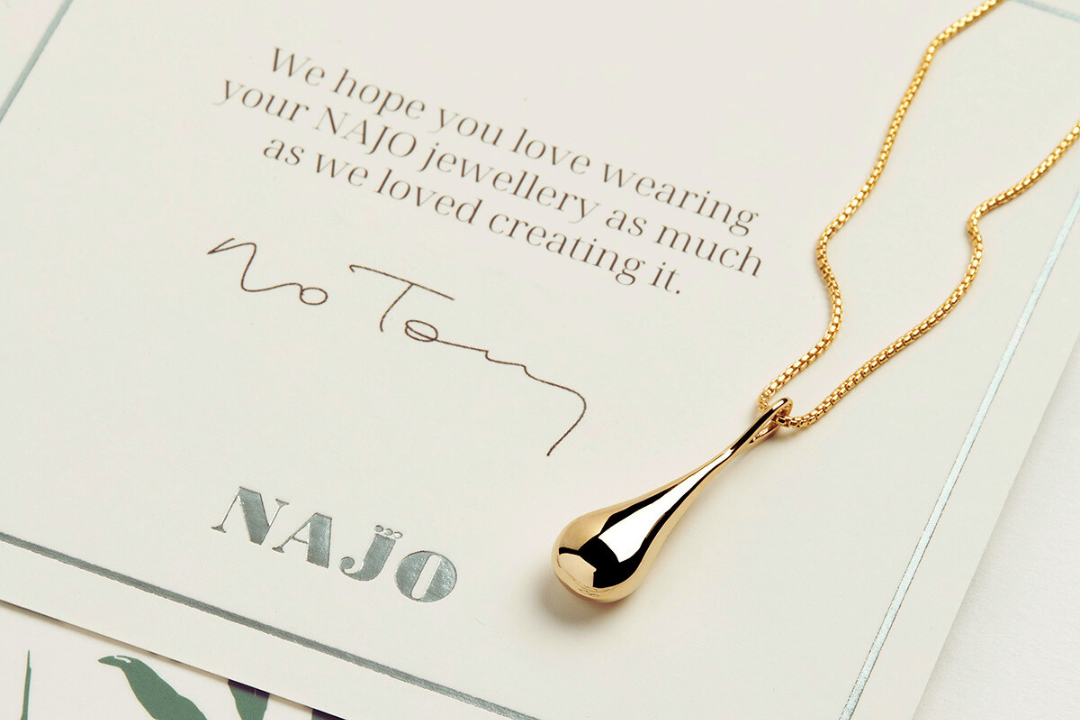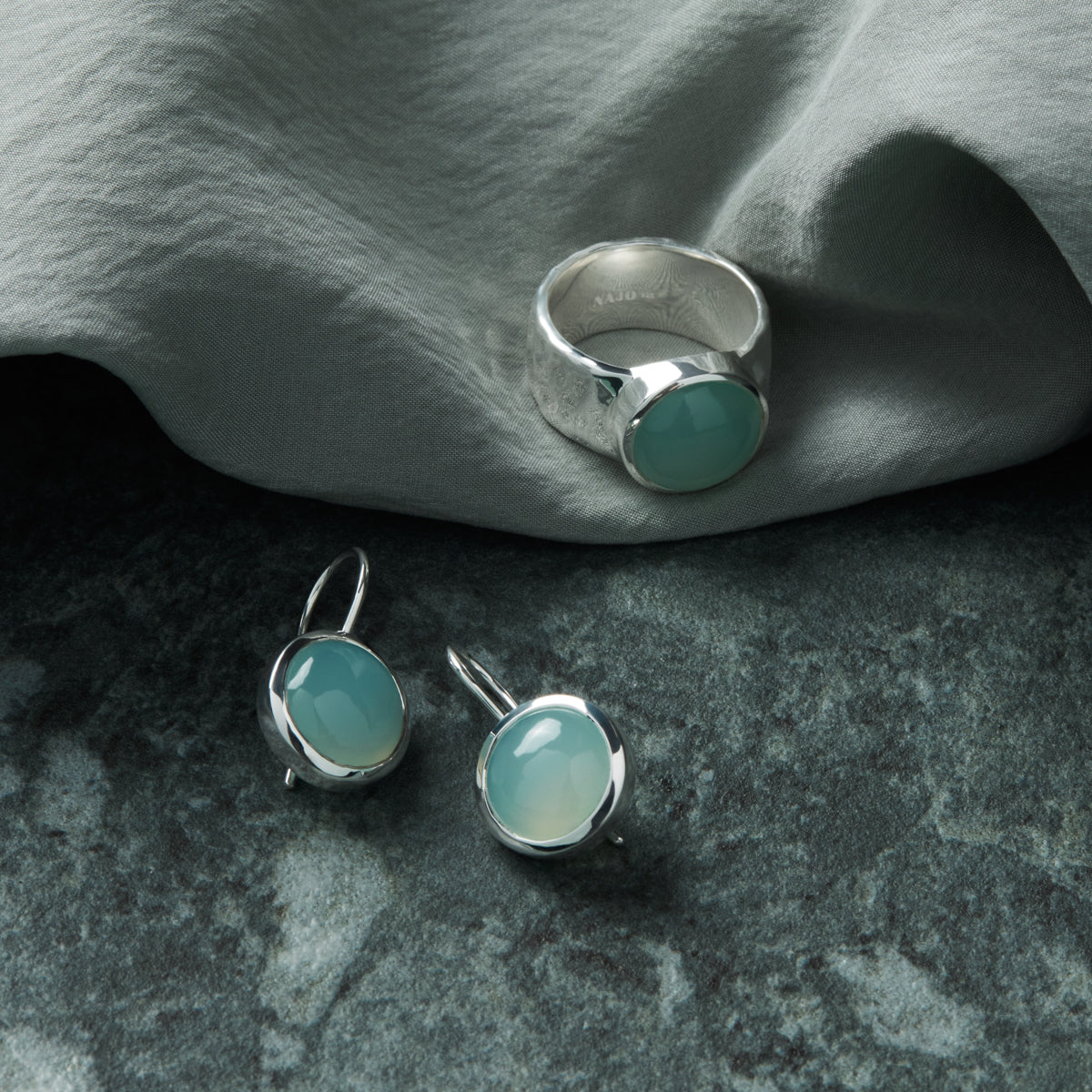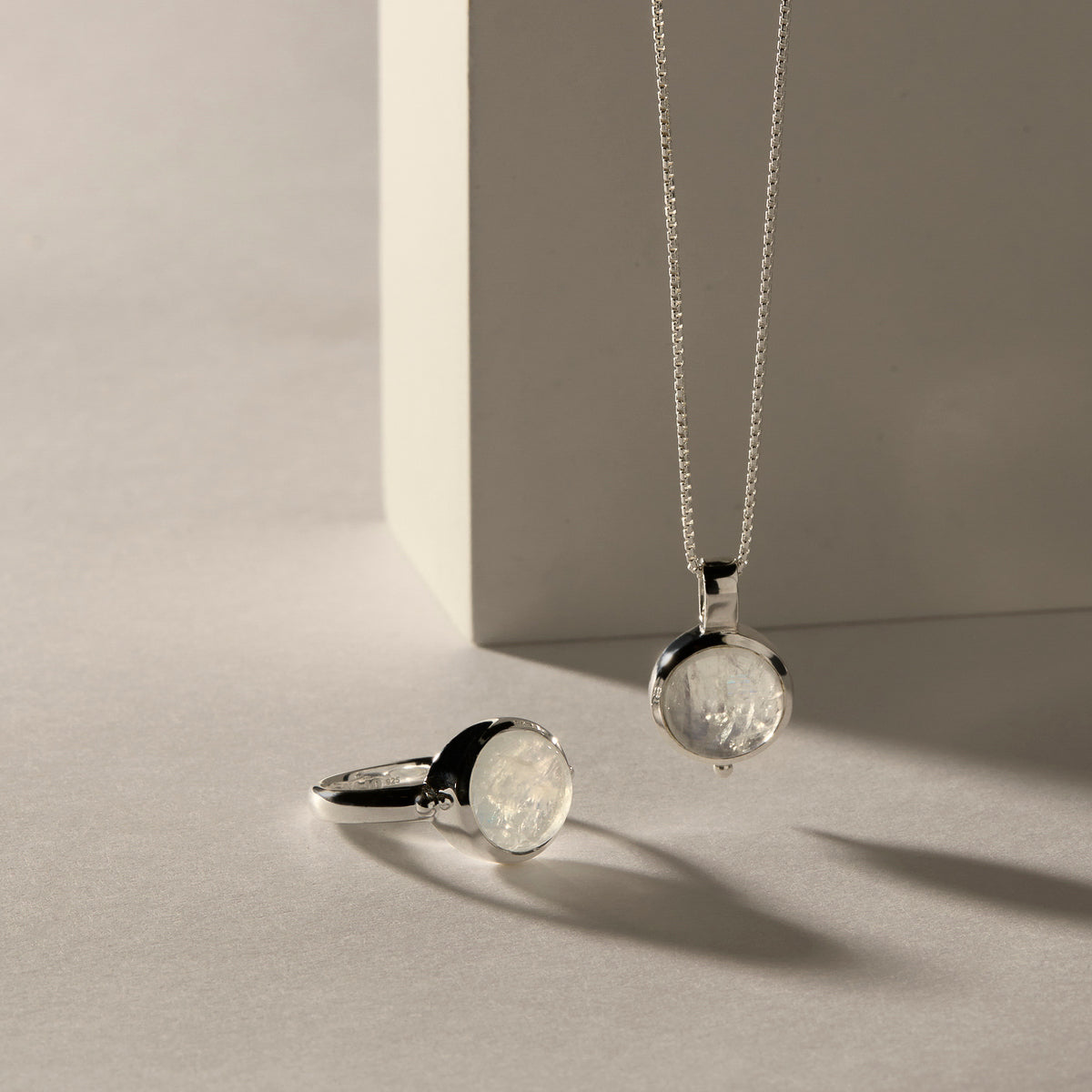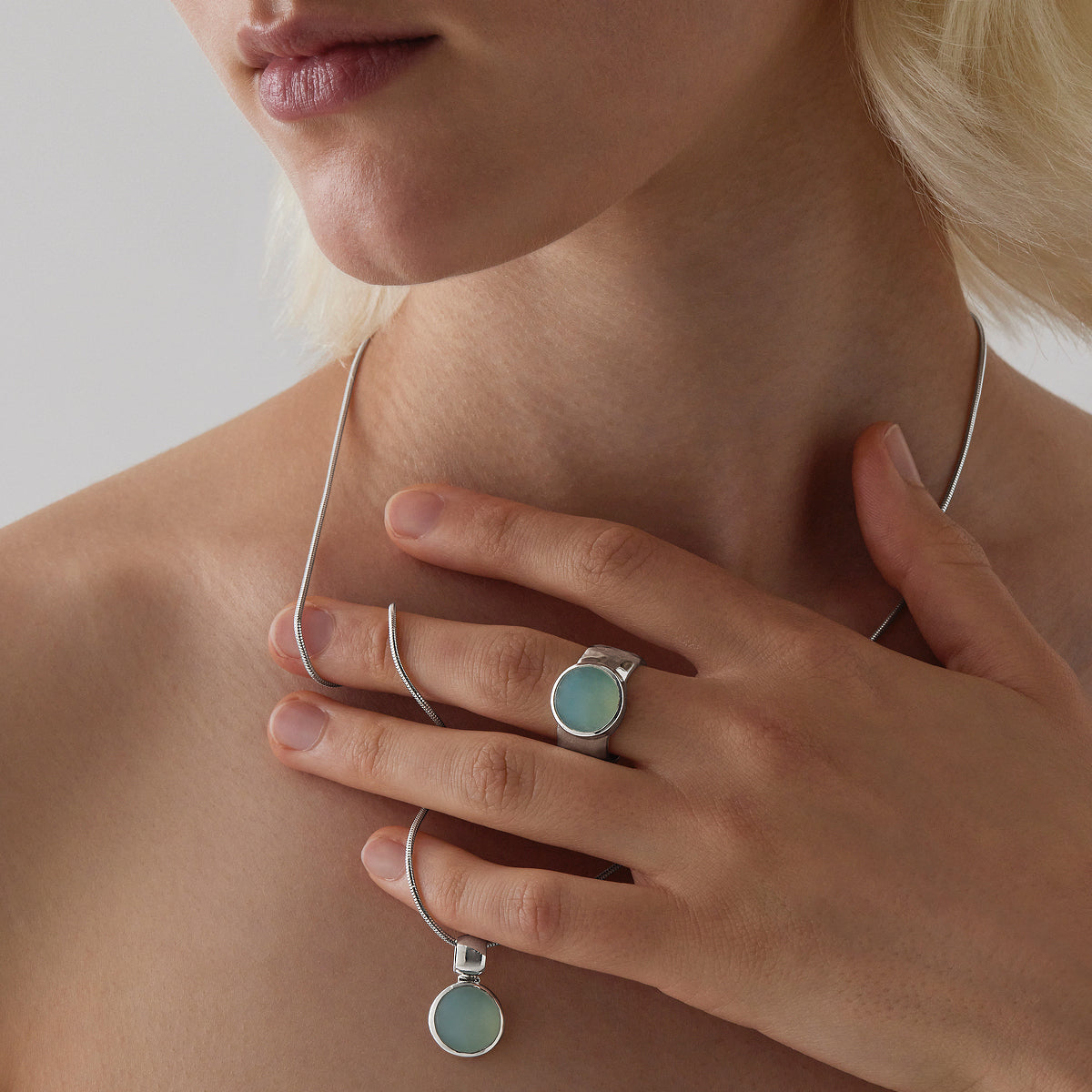Explore the essence of gemstone jewellery: elegant, timeless, and full of meaning. This gemstone jewellery guide cuts through the complexity, giving you the insights you need to select pieces that are not just beautiful, but also resonate with your personal story. From the revered sapphire to the serene amazonite, find your perfect match in the world of gems.

Gemstones, whether naturally occurring or synthesised, are admired for their vibrant colours, unique characteristics, and ability to symbolise various cultural, spiritual, and social statuses throughout history.
Typically cut and polished for use in jewellery, these earthly treasures range from the deep blues of sapphires to the brilliant red of rubies, each telling its own tale of beauty and tradition.
They not only serve as splendid adornments but also act as tokens of wealth, power, and protection, intertwining nature's magnificence with human artistry in a display of timeless elegance.
Understanding The 4 Cs
The fundamental 4C’s craft a foundational understanding, pivotal for anyone venturing into the world of gemstones.
Knowledge of these core principles not only empowers buyers to make informed decisions but also to appreciate the nuanced, multifaceted beauty and unique stories encapsulated within each stone, weaving a rich tapestry of understanding that transcends mere aesthetics, delving into the very essence of each precious piece.
The Four Cs
Carat
Embarking on the gemstone journey, the first stop entails understanding ‘Carat,’. Representing the weight of the stone, carats play a pivotal role in dictating both the size and cost of a gemstone. A careful balance is sought in aligning the desired size with the accompanying budget, for often, as the carats ascend, so too does the price. However, it's crucial to understand that larger size does not necessarily mean superior quality – the charm of a gemstone lies in the combination of its inherent features.
Colour
Delving into ‘Colour,’ we find a spectrum where each hue narrates its own tale and brings with it a distinct personality and aesthetic. From the profound blues of sapphires to the rich red of rubies, colour contributes significantly to a gemstone’s allure and value. The evaluation is often based on three aspects: hue, tone, and saturation. Mastering the art of identifying optimal colour qualities, while appreciating the nuanced variations and unique charisma of each gemstone, indeed crafts a colourful journey in gemstone selection.
Clarity
'Clarity’ invites us to peer into the very soul of a gemstone, identifying and understanding its inclusions and blemishes – its imperfections and perfections alike. Clarity grades guide buyers through a journey from Flawless gems, rare and opulent, through to Included stones which tell a more complex, textured story. Discerning the clarity of a gemstone isn’t merely about seeking perfection but appreciating how each inclusion and blemish contributes to its story and authenticity.
Cut
Lastly, ‘Cut’ propels us deeper, illuminating a world where light dances through meticulously carved facets, crafting a spectacle of brilliance and fire. Different cuts – from the classic Round to the elegant Princess – not only alter a gemstone’s aesthetic but its ability to refract light, thus, defining its sparkle. The craftsmanship behind each cut requires a mastery of art and science, where precision and creativity intertwine to magnify a stone’s intrinsic beauty and optimise its vibrant play of light.
Here are some of the widely appreciated cuts in the gemstone world:

Round Cut
Perhaps one of the most popular and timeless cuts, the round cut, also known as "Round Brilliant," is celebrated for its optimal fire and brilliance. With 57 or 58 facets, it is engineered for sparkling like no other.
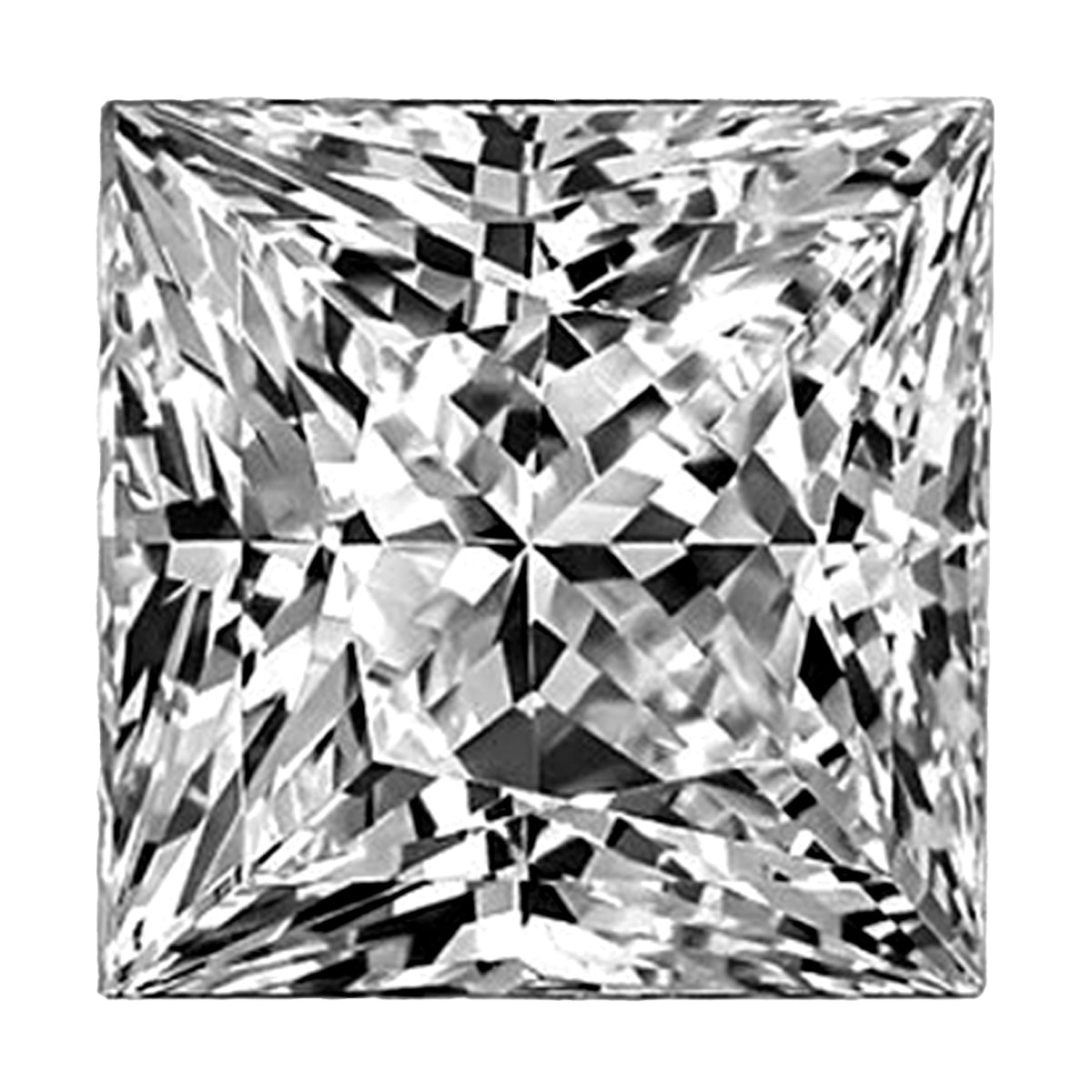
Princess Cut
Recognizable for its square or rectangular shape and pointed corners, the princess cut is a relatively recent creation that has gained rapid popularity for its modern and distinctive style, often used for diamonds but also applicable to other gemstones.

Emerald Cut
Known for its rectangular facets and chopped corners, the emerald cut presents a classic, elegant look. Its long lines provide a level of clarity and a different kind of sparkle compared to other cuts.

Trillion Cut
Triangular and often slightly curved, the trillion cut provides a contemporary and striking look, often used for accent stones but also stunning as a centrepiece.
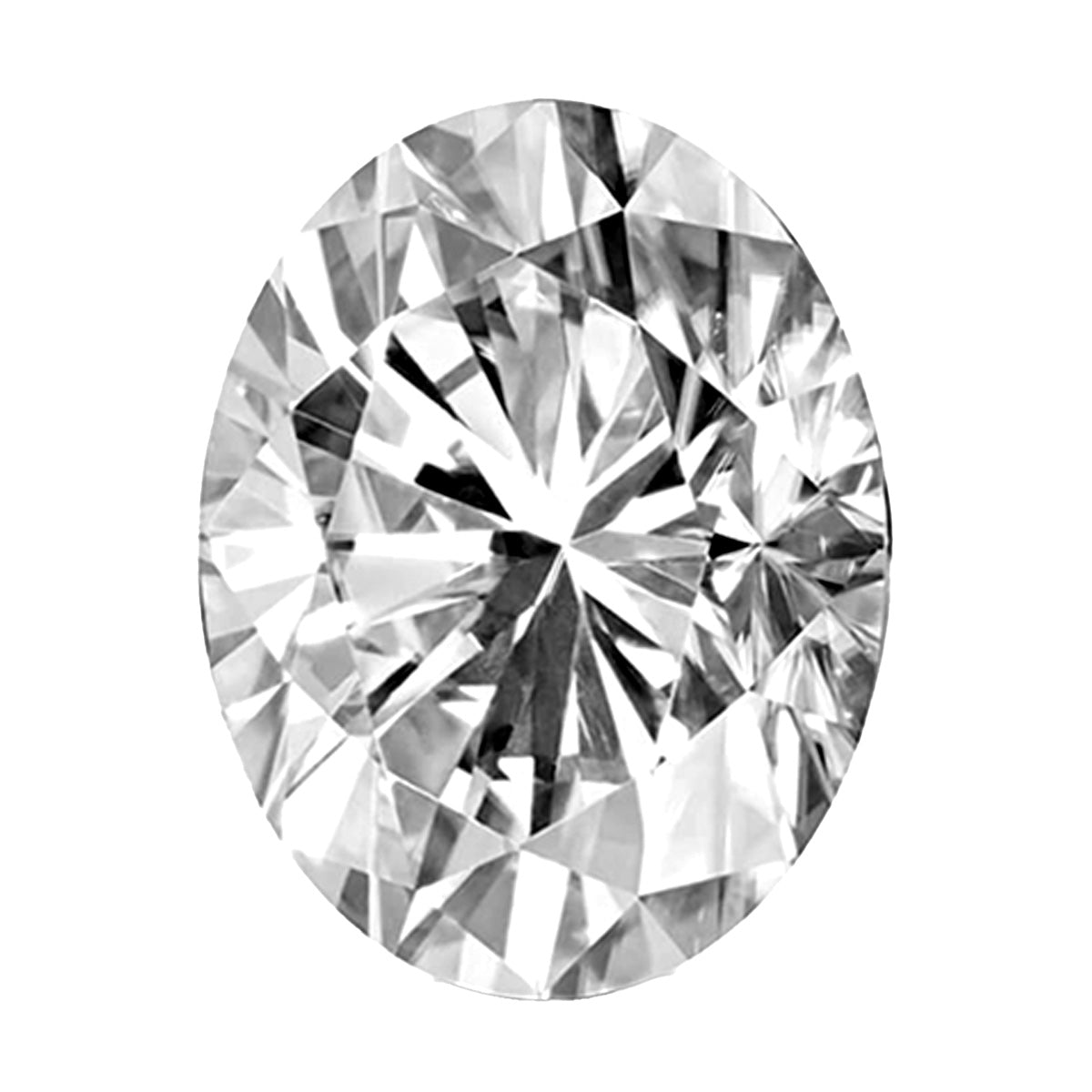
Oval Cut
An adaptation of the Round Brilliant cut, the oval cut offers a larger surface area, giving the perception of a grander stone while retaining much of the brilliance of its round counterpart.
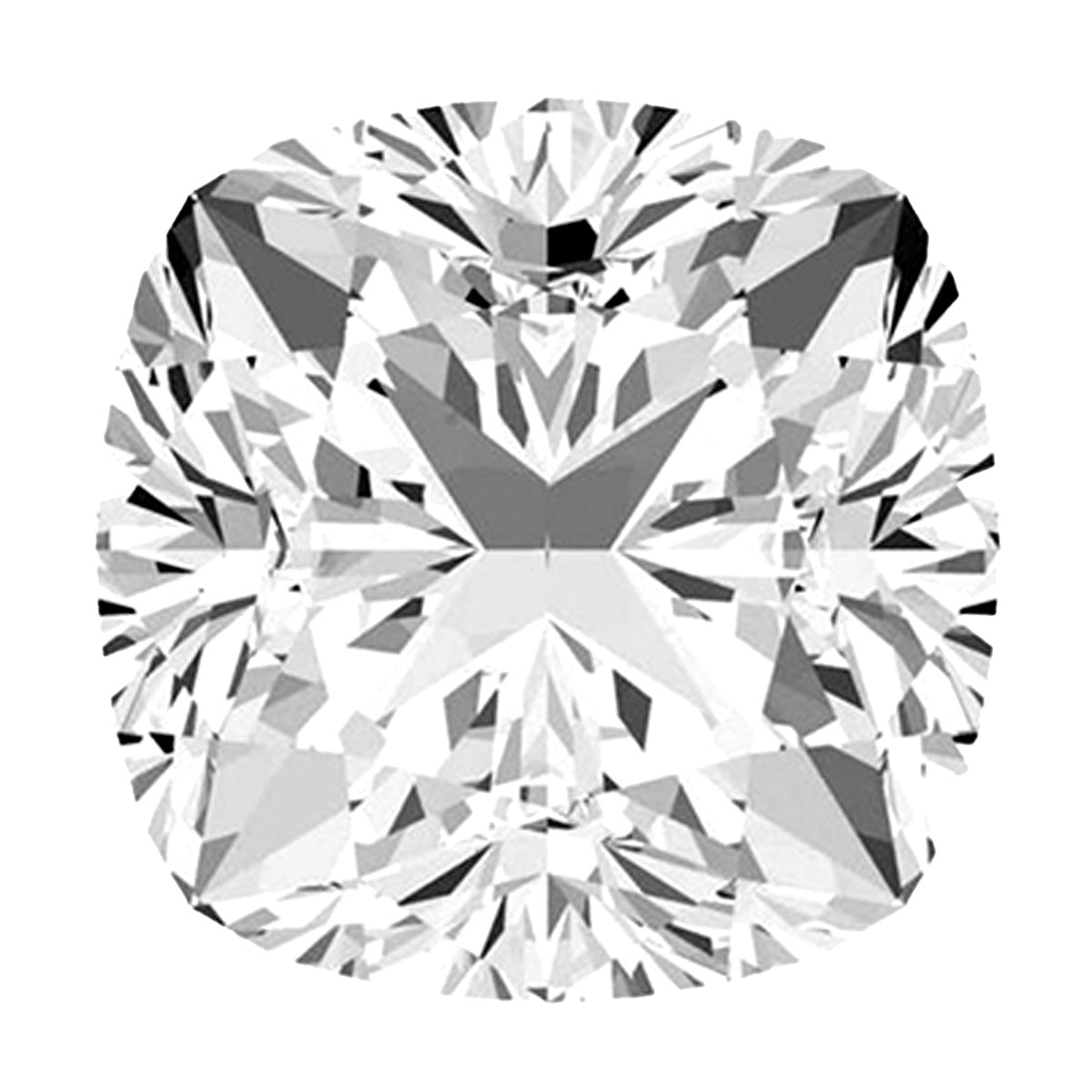
Cushion Cut
With rounded corners and larger facets, the cushion cut is a vintage style that maximises a gemstone’s lustre and Colour, offering a soft, romantic aesthetic.

Pear Cut
Resembling a teardrop, the pear cut combines the characteristics of the round and marquise cuts. Its unique shape is flattering when used in various jewellery pieces like earrings and pendants.

Asscher Cut
Resembling the emerald cut but in a square shape, the Asscher cut provides a distinctive, timeless elegance. Its stepped, cropped corners and concentric square pattern make it stand out.

Marquise Cut
With its elongated, pointed oval shape, the marquise cut can maximise carat weight, giving the appearance of a larger stone and is often utilised to elongate and slenderize fingers when set in rings.
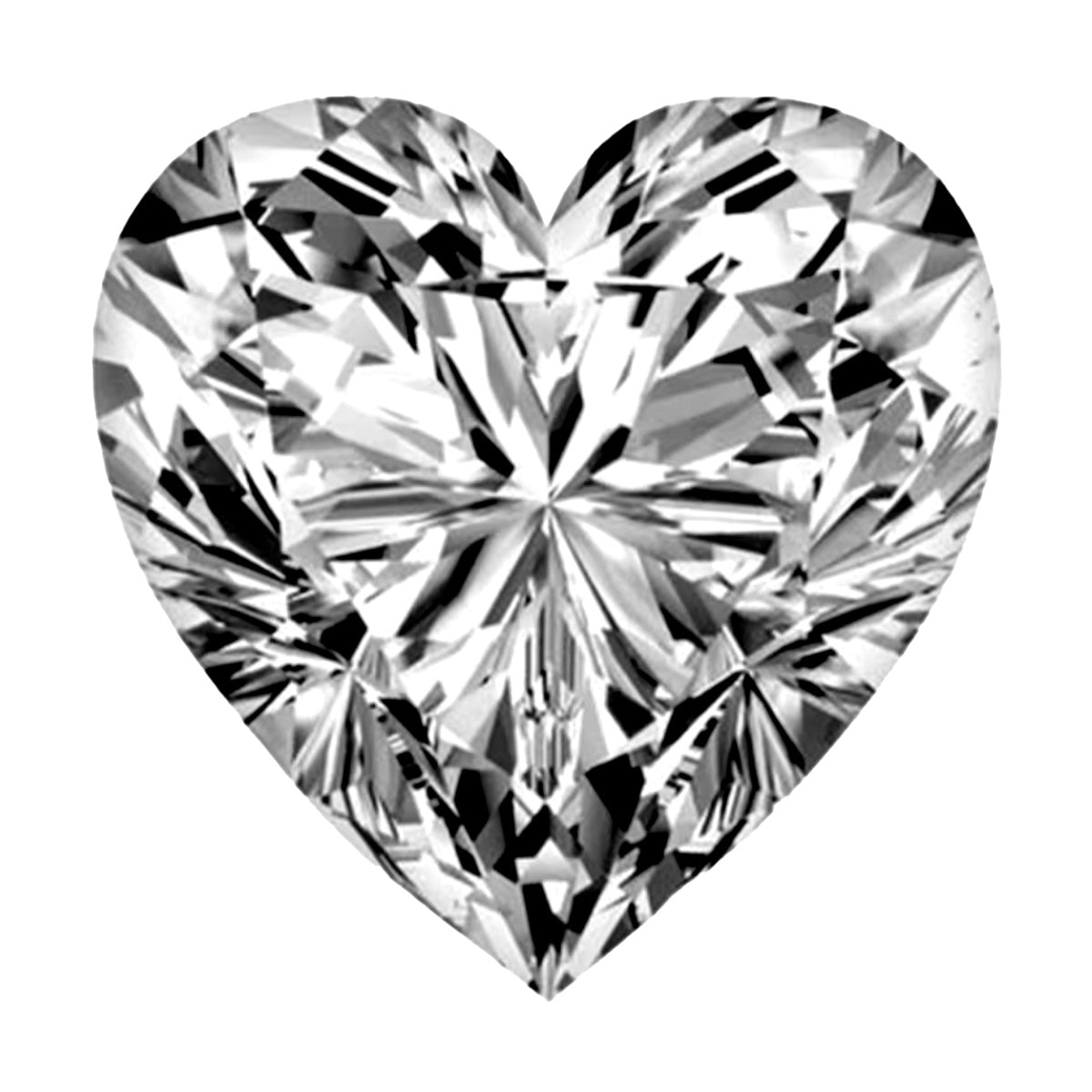
Heart Cut
Rich with symbolism and usually chosen for more romantic or sentimental pieces, the heart cut is technically complex but produces a beautifully unique and meaningful gem.

Radiant Cut
Blending the elegant shape of the emerald cut with the brilliance of the round, the radiant cut boasts trimmed corners and a vibrant sparkle.
The different types of Gemstones
Precious Gemstones
Emerald
Colour – Predominantly Green
Mohs Hardness Scale – 7.5 to 8
Mineral Class – Beryl
Source – Primarily found in Colombia, Brazil, Afghanistan, and Zambia.
Emerald, recognized globally for its enchanting, vivid green hue, belongs to the beryl mineral class. The verdant Colour, often associated with fertility, rebirth, and love, arises from chromium, vanadium, and iron impurities within the stone. Though predominantly green, the depth of Colour can range from light to dark green.
Historically, emeralds have been revered across various civilizations. The ancient Egyptians mined emeralds nearly 4,000 years ago, and Cleopatra was known to cherish the stone. In other cultures, emeralds have often symbolised eternal youth, good fortune, and rebirth, and were believed to bestow the wearer with insight, granting them the ability to foresee the future.
An intriguing fact about emeralds is their inclusions. Often referred to as “jardin” (French for garden), the inclusions are accepted and embraced for providing each emerald with a unique personality. Emeralds are generally graded by eye, meaning that if an emerald is free from visible inclusions to the naked eye, it’s considered flawless.
Ruby
Colour – Typically Red, ranging from pink to blood-red.
Mohs Hardness Scale – 9
Mineral Class – Corundum
Source – Notably sourced from Burma (Myanmar), Thailand, Sri Lanka, Madagascar, Vietnam, and East Africa.
Regal and captivating, rubies have been enthralling people throughout history with their spectacular red hues. Ruby belongs to the corundum mineral class, sharing it with sapphire, yet is distinguished by its characteristic red Colour, contributed by the element chromium.
Historically, rubies have been symbolically associated with power, protection, and prosperity. The ancient Burmese believed that rubies could make them invincible in battle, while mediaeval Europeans held that they would bestow health, wealth, wisdom, and success in love upon their owners.
One fascinating aspect of rubies is their capacity to fluoresce. High-quality Burmese rubies, in particular, emit a vibrant red glow under ultraviolet light, which has often been compared to the smouldering fire of a lit coal. This phenomenon is not merely a fun fact but is also used by gemologists to authenticate rubies and determine their geographic origin.
Diamond
Colour – Can range from Colourless to Yellow, Brown, and even exhibit Fancy Colours like Blue, Green, and Pink.
Mohs Hardness Scale – 10
Mineral Class – Native Element
Source – Mined extensively in Botswana, Russia, Canada, Australia, and several African countries.
Diamonds, the indisputable kings of the gemstone universe, have mesmerised and become synonymous with love, endurance, and strength. Formed deep within the Earth under extreme heat and pressure, diamonds are the hardest known natural substance.
Historically, diamonds were revered for their unmatched hardness and were used in engraving tools and cutting instruments. The ancient Greeks believed diamonds were tears of the gods, while Romans believed they were splinters of fallen stars.
A unique feature of diamonds is their ability to disperse light, creating a spectrum of Colours, which is referred to as “fire”. The cutting of a diamond, particularly into a brilliant cut, is designed to maximise this fire, casting rainbow Colours in a captivating light show. Moreover, in certain conditions, diamonds can phosphoresce (continue to glow after the light source is removed) and fluoresce under UV light, often emitting a bluish hue.
These varied, yet intricately detailed facets of each gemstone not only enrich our appreciation of them but also deepen our understanding of their significance and value through the ages.
Sapphire
Colour – Typically blue, but also found in yellow, purple, orange, and green. Star sapphires exhibit a star-like phenomenon known as asterism.
Mohs Hardness Scale – 9
Mineral Class – Corundum
Source – Found primarily in Australia, Sri Lanka, Thailand, and Madagascar, with significant deposits in several other countries.
Sapphire, a gemstone symbolising wisdom, royalty, and divine favour, is most recognized for its deep, celestial blue. However, this precious stone also presents itself in a stunning array of other Colours, each hue bearing its own unique charm and significance. Sapphires have a long history intertwined with the royalties and clerics. The British Crown Jewels are full of large blue sapphires, and before and after the Middle Ages, sapphires were used by the clergy to symbolise Heaven. In mediaeval times, it was believed to protect its wearer from envy and harm, and attract divine favour.
Sapphires are not only symbols of power and strength but also of kindness and wise judgement. Its remarkable hardness makes it a prized jewel for long-lasting jewellery, ensuring its place in a myriad of heirloom pieces. Beyond its physical robustness, it is the rich tapestry of stories, beliefs, and historical associations that make sapphires truly cherished.
While the allure of the sapphire often lies in its rich blue hue, its variants, known as "fancy sapphires," come in an enchanting array of Colours, such as yellow, indicative of prosperity, and pink, often linked to romance and passion. With an enduring physical and symbolic legacy, sapphires traverse the bounds of time and geography, ensuring their place as one of the most revered gemstones in the world, embodying a wealth of significance and splendour.
Semi-Precious Gemstones
Amethyst
Colour – Purple, varying from pale lilac to deep, rich purple.
Mohs Hardness Scale – 7
Mineral Class – Quartz
Source – Found in Brazil, Uruguay, South Korea, Austria, Russia, and the United States.
Amethyst, renowned for its vibrant, alluring purple shade, has been a stone associated with spiritual awareness, protection, and inner peace. Ancient Greeks and Romans believed that it would prevent intoxication, while mediaeval soldiers wore amethyst amulets as protection in battle in the belief that amethysts heal people and keep them cool-headed. Leonardo da Vinci once wrote that amethyst was able to dissipate evil thoughts and quicken intelligence.
Citrine
Colour – Ranges from pale yellow to brownish-orange.
Mohs Hardness Scale – 7
Mineral Class – Quartz
Source – Predominantly found in Brazil, but also in Bolivia and Spain.
Citrine, recognized for its captivating yellow and golden hues, is often associated with wealth and positivity. Considered the "merchant stone", it’s thought to bring prosperity to shopkeepers and merchants. In addition to being a November birthstone, citrine celebrates the 13th wedding anniversary. The stone is believed to derive its name from “citron,” a French word for lemon, showcasing its zestful Colour and energy.
Turquoise
Colour – Sky blue to green.
Mohs Hardness Scale – 5 to 6
Mineral Class – Phosphate
Source – Iran, the Southwestern United States, China, Egypt, and Mexico.
Turquoise, with its distinctive robin’s egg blue, has for centuries been revered as a symbol of protection, healing, and prosperity. Native American cultures especially valued turquoise for its spiritual and cultural significance, often using it in ceremonies and for trade. The gemstone has also adorned the robes of royalty and been used to fashion talismans with protective properties.
Rare and Unique Gemstones
Tanzanite
Colour – Blue to violet or purplish blue.
Mohs Hardness Scale – 6.5 to 7
Mineral Class – Zoisite
Source – Exclusive to Tanzania.
Tanzanite, a relative newcomer to the gemstone market, is coveted for its captivating and vibrant blue and violet hues. Discovered in the Merelani Hills of Northern Tanzania, it was Tiffany & Co. that christened it “Tanzanite” and brought it to the global stage in the 20th century. Its limited geographic availability enhances its allure and value. Tanzanite can exhibit different Colours when viewed from different angles, a phenomenon known as pleochroism.
Citrine
Colour – Green in daylight and red under incandescent light.
Mohs Hardness Scale – 8.5
Mineral Class – Chrysoberyl
Source – Initially discovered in Russia, also found in Brazil, Sri Lanka, and East Africa.
Alexandrite, named after Russian Tsar Alexander II, is famed for its remarkable Colour-changing ability, transitioning from green in daylight to a red hue under incandescent light. It was discovered in the Ural Mountains of Russia in the 19th century and was immediately embedded in Russian national pride due to its red and green Colouration— the military Colours of Imperial Russia. Alexandrite is not only a stunning gemstone for its beauty but also for its rarity and fascinating chromatic behaviours.
By delving into the properties, origins, and lore of each gemstone, we bridge the gap between their physical characteristics and the metaphysical properties bestowed upon them through centuries of admiration and reverence. Their unique attributes, coupled with their diverse and vibrant palettes, continue to captivate jewellers and collectors alike, echoing tales of ancient civilizations and natural wonders.
Pearl
Colour – White, Black, Grey, Pink, Blue, Green, and Yellow.
Mohs Hardness Scale – 2.5 - 4.5
Mineral Class – Carbonate
Source – Found worldwide, notably in Australia, China, Japan, French Polynesia, and the United States.
Pearls, with their timeless elegance, have been symbols of purity, integrity, and grace throughout history. Unlike most gemstones formed in the earth, pearls are created by living creatures, mollusks, primarily oysters and mussels. Known for their soft, satiny lustre and gentle array of colours, pearls have been revered in various cultures. Cleopatra famously dissolved a pearl in vinegar and drank it to prove her wealth and power to Roman statesman Mark Antony. Pearls also have religious significance in Christian, Hindu, and Islamic traditions, symbolising purity, wealth, and a means to connect with the divine.
Opal
Colour – colourless, White, Yellow, Red, Grey, Black, and all the colours of the rainbow.
Mohs Hardness Scale – 5.5 - 6.5
Mineral Class – Hydrated Silica
Source – Predominantly found in Australia, with other sources in the United States, Mexico, and Brazil.
Opals, celebrated for their mesmerising play-of-colour, embody mystery, creativity, and hope. The ancient Romans deemed it a symbol of hope and good luck, while the indigenous people of Australia see it as a spiritual emblem. An opal’s allure is in its kaleidoscopic colours, reflecting light to showcase a vibrant array of hues. It has been considered a protector in times of disease and war and a guardian of eyesight. Writers have used the opal to symbolise shifting emotions and mystical visions, which is fitting, given the stone’s dynamic and colourful nature.
Onyx
Colour – Typically black or white, may have parallel bands.
Mohs Hardness Scale – 6.5 - 7
Mineral Class – Chalcedony
Source – Found in various regions including Brazil, India, Madagascar, and the United States.
Onyx, known for its smooth, lustrous, and deep black appearance, has historically been associated with protection and stability. In various cultures and historical periods, onyx has been utilised for crafting artefacts and jewellery, believed to provide strength and shield the wearer from negative energies. The ancient Greeks and Romans valued it for making cameo brooches because its layers can be carved to create detailed relief images. Onyx is often used in a protective amulet, and it’s believed to provide strength and support during difficult circumstances, absorbing and transforming negative energy.
Each of these gemstones – pearl, opal, and onyx – brings with them a distinct charm, rich history, and cultural significance, infusing them with a value that transcends their physical attributes. Their enduring allure resides not only in their visual appeal but also in the myriad of stories, beliefs, and traditions that have encompassed them throughout the annals of time.
Amazonite
Colour – Ranges from a light green to a bold turquoise, often streaked with white or lighter shades.
Mohs Hardness Scale – 6 to 6.5
Mineral Class – Microcline Feldspar
Source – Primarily found in Russia, Madagascar, Brazil, United States (Colorado and Virginia), and Canada.
Embarking on the aesthetic journey that Amazonite provides, you'll discover a gemstone that has woven its way through various historical periods, encapsulating the mystical allure and natural beauty inherent to gemstones. This captivating stone, with its tranquil blue-green hue, is not only a visual delight but also a source of calm, known to soothe the spirit and calm the soul.
Amazonite is often associated with filtering out stresses, healing traumas, and soothing energies in the home and workplace. Its aesthetic and emotional charm made it desirable in various cultures. Ancient Egyptians crafted amulets, beads, and other decorative items from Amazonite, enchanted by its serene colour and the peace it evoked. It was often linked to fertility and protection in various cultures and was thought to have been used by Amazonian warriors in battle for its healing and protective properties.
Despite its somewhat modest place on the Mohs hardness scale, Amazonite has been and continues to be used in jewellery, carving, and interior design due to its delightful colour, which can add a fresh and vibrant touch to any item or space. When set into jewellery, Amazonite is typically cut en cabochon to enhance its colour and ensure longevity, providing pieces with a timeless and naturally elegant appeal.
The nuanced charm of Amazonite brings with it a dash of historic mystery and a splash of vibrant natural beauty, making it a gemstone that quietly, yet confidently, shares its rich tale through its colour and subtle vibrancy, speaking to those who hold it close.
What You Should Know
Navigating through the captivating world of gemstones warrants an understanding that the dazzling specimens one might gaze upon could have undergone certain treatments to enhance their aesthetic appeal. These treatments, while common in the industry, significantly impact the inherent qualities, longevity, and value of the gemstones.
Common Treatments and Their Effects
Heating: One of the most prevalent treatments, heating, involves exposing the gemstone to high temperatures to alter or improve its colour and clarity. For instance, heating can transform pale sapphires into a rich, vibrant blue or change brownish zircon into a stunning blue.
Oiling: Particularly common with emeralds, oiling involves infusing the stone with oil to minimise the appearance of inclusions and enhance clarity. Oiling can improve the visual appeal of the gemstone, but it may require re-oiling over time to maintain the enhanced appearance.
Bleaching and Dyeing: To modify colour and improve uniformity, some stones like pearls and jadeite are often bleached and subsequently dyed. This enhances their vibrancy but might affect their durability.
Impact on Value and Longevity
The practice of treating gemstones inherently affects their market value and durability. While treatments like heating might be almost universally accepted in the trade of certain stones, like blue sapphires, others like oiling may be viewed with scepticism due to their temporary nature. The overall longevity of a gemstone may be compromised with treatments; for example, dyed stones may fade with exposure to light and heat, and oiled stones may need re-treatment over time.
The Imperative of Disclosure and Authenticity
Ethical considerations within the gem trade underscore the paramount importance of disclosure regarding any treatments a gemstone has undergone. Sellers are ethically bound to disclose any treatments, as it influences a gem’s care requirements, durability, and value. Buyers, on the other hand, must inquire and ensure transparency in transactions to safeguard their investment. Certificates from recognised gemological labs detailing the gemstone's properties and any treatments it may have undergone can provide an assurance of authenticity and value.
In essence, understanding the universe of gemstone treatments not only enlightens the path of collectors, jewellers, and enthusiasts but also ensures a fair and ethical trade where the magnificence of these natural wonders can be appreciated authentically and ethically. This knowledge empowers both sellers and buyers to engage in transactions that celebrate and respect the true essence of these geological marvels.
Tips for Buying Gemstone Jewellery
Navigating through the fascinating and multifaceted realm of gemstone jewellery demands a discerning eye, a sprinkle of knowledge, and mindful consideration of various aspects to ensure the acquisition of pieces that resonate in beauty, quality, and value. Ensuring a wise and satisfying purchase involves more than just choosing a visually appealing piece; it requires delving into the depth of quality, authenticity, and value.
The foundation of a confident purchase lies in engaging with sellers who are enveloped in a cocoon of trust and credibility. Establishing veracity in the transaction, reputable sellers provide clear, transparent information about the gemstone’s properties, origin, and any treatments it might have undergone. They uphold ethical practices, ensuring that the stones are sourced and processed adhering to all legal and moral frameworks. Additionally, acquiring pieces from esteemed sellers often means that the gemstones have been scrutinised under stringent quality checks, ensuring you receive a piece that truly mirrors its value.
Certifications from recognized gemological institutions stand as a testament to the authenticity and quality of the gemstone. It furnishes vital details about the stone’s properties, including its origin, treatments, and overall quality. Appraisals, on the other hand, provide an estimated retail replacement value for insurance purposes. A keen understanding of these documents, recognizing the institutions that issue them, and comprehending the terminology and grading scales used, arm you with information that safeguards your investment.
Embarking on the gemstone purchasing journey with a clear budget in mind assists in navigating through the vast options without succumbing to the whirlwind of overwhelming choices. Aligning the budget with expectations, understanding the factors that influence the price of the gemstone, and recognizing where compromises can be made without significantly impacting the aesthetic or value of the piece ensures that the acquisition is in harmony with your financial comfort and aesthetic desires. Exploring options, comparing prices, and ensuring that the price aligns with the quality and size of the gemstone propels a purchase that resonates with value.
A clear, comprehensive understanding of the seller's return policy and any warranties or guarantees they offer furnishes an additional layer of security to your purchase. It ensures that, should the piece not meet your expectations or should any issue arise in the future, you are well-armed with the knowledge and framework to address and resolve it effectively. Ensuring that the policies are not just understood but also agreed upon in writing safeguards your interests and ensures a transparent and fair transaction.
In the lush landscape of gemstone jewellery, each piece tells a story, a whisper of the earth’s marvels encapsulated in a fragment of mineral, presented in a symphony with metal and design. Embarking on this journey with knowledge, clarity, and mindful consideration ensures that the story resonates, not just with the beauty and marvel of nature but also with the ethos, expectations, and satisfaction of the beholder.
Setting the Scene
Embarking on the journey to curate or purchase gemstone jewellery extends beyond the stone itself, delving into the realm where metals and settings play pivotal roles in showcasing and safeguarding the gemstones. The interplay between the vibrant hues of the stones and the lustrous appeal of metals renders each piece of jewellery uniquely splendid.
Gold Varieties: With its lustrous yellow hue, gold is a timeless and widely cherished choice for jewellery. However, it's often alloyed with other metals for strength and may be transformed into white gold or rose gold to provide diverse aesthetic options.
Silver: Cherished for its cool, subtle sheen, silver offers an understated and elegant backdrop for various gemstones. Sterling silver, an alloy with added strength, is frequently employed in jewellery making.
Platinum: Celebrated for its durability and rarity, platinum provides a neutral, yet luxurious setting for gemstones, with its dense, sturdy nature offering enhanced security for stones.
Alternative Metals: Exploration into metals like titanium, tungsten, or even stainless steel opens up innovative, often more affordable, and contemporary avenues in jewellery creation.
The symphony between a gemstone and its setting should narrate a coherent visual story. The colour, size, and shape of the gemstone should be complemented by the chosen metal and setting. For example, cool-toned gems like sapphires and diamonds often harmonise beautifully with white metals like white gold and platinum, while warm-hued stones like citrine and ruby might resonate with yellow or rose gold. The setting, whether a classic prong, elegant bezel, or modern tension setting, should enhance the stone’s beauty while ensuring its security.
Mindful selection of metals and settings, considering the lifestyle and preferences of the wearer, is paramount. For pieces that will adorn everyday ensembles, robust metals like platinum and durable settings that securely cradle the stone (like bezel settings) might be apt. Conversely, for statement pieces meant for occasional wear, one might explore delicate settings and a wider array of metals. Wear and tear, potential for scratching, exposure to chemicals, and the ease of maintenance should all be contemplated to ensure the piece retains its charm through time.
The grandeur of gemstone jewellery comes to fruition when the chosen stone, metal, and setting intertwine harmoniously, each element elevating the others, crafting a piece that is not only visually stunning but also resonates with the wearer. From the ethereal dance of light within a gemstone to the gentle embrace of the metal that holds it, every element contributes to the story that each piece of jewellery tells, making it a timeless beacon of memories, meanings, and majestic beauty.
Caring for Your Gemstone Jewellery
Gemstones, with their vivid colours and luminous shine, are undoubtedly an enchanting addition to any jewellery collection. However, keeping them in their prime condition, showcasing their inherent beauty and preserving their value, calls for a mindful approach towards their care, storage, and maintenance. It's not just about ensuring their physical appearance but also about nurturing their longevity and maintaining the integrity of both the stones and the settings they are housed in.
The initial step towards maintaining the lustrous allure of your gemstone jewellery involves regular cleaning and adept storage. Most gemstones can be gently cleaned using warm soapy water and a soft brush, but some, like pearls or opals, require a different approach due to their porosity and sensitivity. Always ensure to familiarise yourself with the specific care guidelines for each type of gemstone. When it comes to storage, individual soft pouches or separate compartments in a jewellery box prevent them from scratching against each other and also guard against unnecessary wear. Remember that exposure to harsh chemicals, direct sunlight, and extreme temperatures can adversely impact the gemstone’s colour and durability.
While regular home cleaning is beneficial, periodic professional cleaning ensures that your gemstones are not only cleaned thoroughly but also checked for any possible damage or wear, such as loose settings, chips, or scratches. Professional jewellers employ ultrasonic cleaners, high-powered steam cleaners, or other specialised equipment, ensuring a profound, meticulous clean without risking damage to your precious pieces. Moreover, they have the expertise to identify and rectify any issues, such as loose prongs or clasps, ensuring the security and integrity of your jewellery.
Preserving the beauty and extending the life of your gemstone jewellery isn’t confined to cleaning and repair but extends to mindful wear and handling. Always adorn your gemstones after applying makeup, perfume, or hairspray to avoid exposure to chemicals that might tarnish their brilliance. For those pieces that are particularly delicate, infrequent, and cautious wear ensures they are shielded from potential damage. A consistent checking mechanism for any loose stones, worn prongs, or weakened clasps helps in preventing possible loss or damage. Always remove your gemstone jewellery before engaging in strenuous activities like sports, cleaning, or gardening to shield them from potential harm.
In the enchanting world of gemstone jewellery, every piece tells a story of its own, bringing with it a palette of colours, history, and symbolic meanings that resonate on a deeply personal level. From understanding the intrinsic qualities of different gems to ensuring their care, preservation, and rightful place in your collection, the journey through selecting, purchasing, and cherishing these treasures is uniquely delightful.
As we intertwine knowledge with heartfelt choices, embracing the allure of gemstones becomes a timeless affair. For over 30 years, NAJO has been part of countless stories, crafting pieces that celebrate the rich tapestry of life enriched by such beautiful stones. From divine women’s pearl jewellery to sterling silver jewellery, we invite you to continue your journey with us, explore pieces that don't just adorn but also become a part of your own, beautifully unfolding narrative.
Love NAJO x
FAQs
How do I choose gemstone jewellery?
Selecting gemstone jewellery intertwines the realms of personal style, budget, and sometimes, symbolism or sentimentality. Begin by identifying the type of jewellery you're seeking—be it a ring, necklace, or earrings—and determine the colour and type of gemstone that appeals to you or holds particular significance. Familiarise yourself with the four Cs (Carat, Cut, Colour, Clarity) to understand the quality and value of gemstones.
Consider how the piece will integrate with your existing wardrobe and any sentimental or symbolic importance it may carry for you. Your budget plays a crucial role, so explore options that offer the best value for the quality you’re seeking. Additionally, ensure that you purchase from reputable sellers who provide detailed information about the gemstone, including any treatments it has undergone, and who adhere to ethical sourcing and labour practices. Ultimately, choosing gemstone jewellery should be an enjoyable process that results in a piece which resonates with you, serving as a cherished adornment or a special gift.
How do I know what gemstone to wear?
Choosing the perfect gemstone to wear involves a thoughtful blend of personal preference, aesthetic appeal, and sometimes, symbolic or emotional resonance.
Begin by considering your favourite colours, as well as hues that complement your wardrobe and skin tone. Additionally, reflect on any sentimental or healing properties you might be seeking—some individuals select stones that align with their birth month or zodiac sign, while others may choose a gem that is believed to bring forth specific energies or therapeutic properties.
The shape and cut of the gemstone should also resonate with your style and preference, whether you gravitate towards the classic round brilliance or the elegant emerald cut. Furthermore, consider the setting and metal type of the jewellery, ensuring it harmonises with your typical aesthetic and lifestyle. Ultimately, the gemstone you wear should evoke a sense of joy, confidence, and connection, making you feel adorned in more ways than one.
What to look for when buying gems?
Navigating the intricate world of gem buying demands a fundamental understanding and application of the 4C's: Carat, Cut, Colour, and Clarity, each attributing distinct aspects to assess the gem's quality and value. Authenticity verification through certified documentation and discerning any treatments, which might affect the gem's overall value and durability, are paramount.
Equally vital is the consideration of the gem’s origin, as it can impact its desirability and price, albeit intrinsic qualities should remain a priority. Scrutinising prices across different sellers and ensuring they correlate appropriately with the gem’s quality and size is fundamental to ascertain a balanced and fair purchase.
The ethical and legal facets of buying gems are equally crucial, demanding assurance that the stone has been sourced and produced adhering to all legal and ethical standards. Purchasing from a trustworthy seller, with clear transparency on their return policy and comprehensive information about their gems, ensures a secure and satisfying buying experience. Considering whether the gem will be utilised in jewellery, kept as part of a collection, or held as an investment, will influence which qualities are prioritised during the purchasing process, ensuring alignment with the buyer’s intent and future utilisation.
Which 4 gemstones are considered precious?
The four gemstones traditionally considered to be "precious" are:
- Diamond: Known for its hardness and brilliance.
- Ruby: Valued for its vibrant red colour and durability.
- Sapphire: Renowned for its typically blue colour, though it comes in a variety of colours except red.
- Emerald: Cherished for its rich green colour and rarity.
These gems have historically been labelled as precious due to their rarity, enduring appeal, and significant economic value. It's worth noting that while these distinctions between precious and semi-precious stones are still used by many, some professionals in the gem industry prefer not to use these terms, as numerous "semi-precious" stones can be equally as valuable and rare as "precious" ones.













